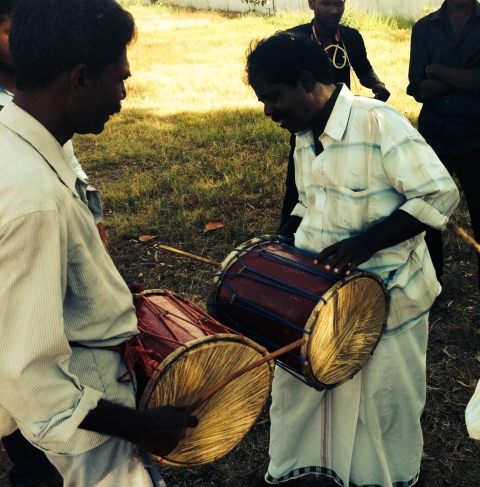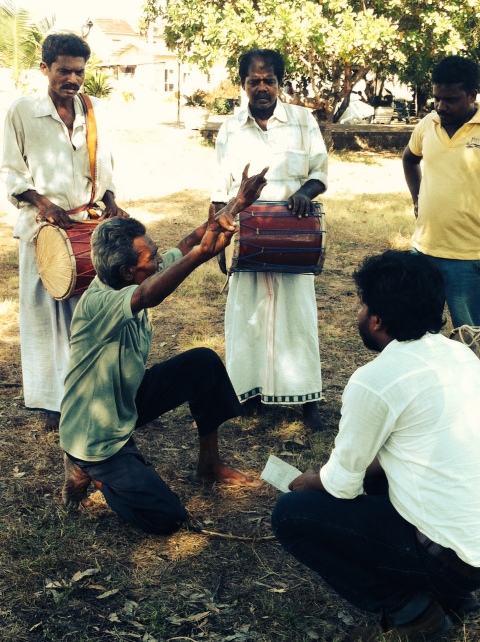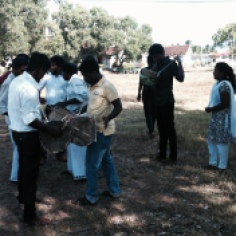The Paraiyers’ drums

Another part of the Sri Lanka Norway Music Cooperation is the ‘village level performance’ program. Village-level performances give village elders that are custodians of rare and endangered folk forms (music, dance and theatre) support to put on a performance of their traditional work. Support can include funds to purchase instruments, for artist rehearsal time, to prepare costumes and props, and travel costs. This year, one of the village-level performances was in the Eastern province near the city of Batticaloa, and involved musician elders from four different villages.
The model that was used this year was particularly interesting. The musicians were all performers of the Parai drum tradition, which has for a long time been regarded as the instrument of the low-caste Paraiyers (see here for an interesting history of the Paraiyers). Because of this, members of the Paraiyer caste often reject this musical tradition, seeing the drum and its rhythms as markers of lowly status, and indeed, a marker of membership of that caste. Yet the musicians involved in this year’s village-level festival are adamant that the traditions and instruments should be preserved, and they have continued to play for rituals (usually funerals) despite the dismissive and often hostile responses from others in their community.

Therefore, building up the status and importance of the parai drum, and recognizing the work of the elder musicians in preserving it was one objective of the village-level festival. The next objective was to increase knowledge of the drum and its rhythms among young students of Tamil music. The Swami Vipulananda Institute of Aesthetic Studies (SVIAS) at Eastern University was a co-presenter of the village-level festival, and arranged for the elder-musicians to rehearse at the university each day in the weeks leading up to the performance. Students and lecturers of Tamil drum and dance worked with them closely, studying the artform. They worked outdoors, under big trees with a circle of benches surrounding the rehearsal space.
Bringing it into the University was a new initiative for the Music Cooperation, but it served two purposes – of helping to preserve and celebrate the knowledge of the elder musicians by training the next generation of performers, and of sidestepping the hostility towards the Parai drum within the musicians’ own communities.
I was able to observe two days of rehearsals during my research trip to Batticaloa two weeks ago, and these photos are from that visit. I saw a fascinating level of exchange taking place between the elders, the students, and the lecturers. Sometimes it was hard to see who was the authority, or the director of the project. One of the students explained it to me this way:
The elders are the experts in how to play this drum. They know all the rhythms and techniques and forms, and the students are eager to learn this from them. However, they have only performed for village rituals up until now, and they are not experienced in creating a performance for the public. So the students and the lecturers are contributing those ideas.
It reminded me that finding the balance between support and instruction, agency and collaboration, the authority of knowledge and the authority of institutions, and when to be expert and when to step back and give space for the content to emerge and evolve, is complex, messy, and somewhat infinite and imperfect pursuit. This project was tackling these challenges in what seemed to me to be courageous and thoughtful ways. I’m sure they all learned a great deal, and for me, it was an intriguing and thought-provoking process to observe.




Wow! Exceptional work and amazing to be there to witness.
Love the way you think and write Gillian Howell. A pleasure as always to read your post.
Big love to you from chilly Central Victoria!
Rx
>